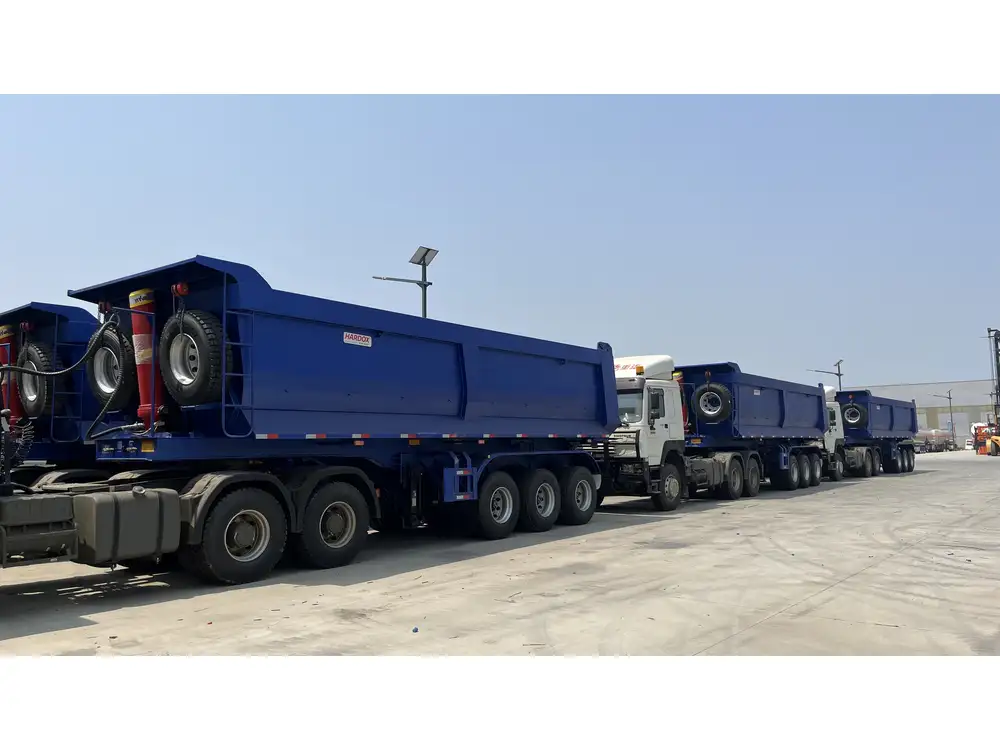Adjusting the trailer brakes on a semi-truck may seem like a daunting task for many drivers, yet understanding the process is crucially important for both safety and performance. Trailer brakes play an essential role in stopping power, particularly for heavy loads; hence, maintaining them in optimal condition is non-negotiable. This detailed guide outlines the necessary steps, tools, and considerations for effectively adjusting trailer brakes, ensuring your semi-trucks are safe and efficient on the road.
Understanding Trailer Brake Systems
Before diving into the adjustment process, it is vital to comprehend the two primary types of trailer brake systems used on semi-trailers: electric brakes and air brakes.
Electric Brakes
- Operation: Electric brakes function via a magnet that engages the brake shoes against the drum as electric current flows through the system.
- Adjustment Method: Typically done through a manual adjustment mechanism found on the brake assembly.

Air Brakes
- Operation: Air brakes rely on compressed air to engage braking mechanisms. They are common in larger vehicles wherein hydraulic systems may not provide adequate stopping power.
- Adjustment Method: Involves modifying the brake chamber push rod to change the gap between the brake drum and shoes.
Understanding your trailer’s brake system is essential for selecting the appropriate adjustment method.
Tools Required for Brake Adjustment
For an efficient adjustment process, assembling the right tools beforehand is crucial. Here’s a comprehensive list of what you need:
| Tool | Purpose |
|---|---|
| Wheel Chocks | To secure the semi when parked |
| Socket Wrench Set | For loosening and tightening nuts |
| Torque Wrench | To ensure proper torque specifications |
| Adjustable Wrench | For adjusting nuts and fittings |
| Screwdrivers | For any necessary disassembly |
| Brake Adjustment Tool | Special tool for certain types of brake systems |
| Clean Cloth | For wiping off excess grease or debris |
| Ruler or Caliper | For measuring gap adjustments |
Investing in quality tools will make the job easier and ensure the accuracy of your adjustments.
Steps to Adjust Trailer Brakes on a Semi

Step 1: Safety First
- Park the Semi on Level Ground: Ensure you execute adjustments on flat surfaces to avoid rolling.
- Engage Wheel Chocks: Place wheel chocks both in front and behind a tire to prevent movement.
- Disconnect Power: If using electric brakes, disconnect the power supply to the braking system for safety.
Step 2: Inspect the Brake Assembly
Before making adjustments, thoroughly inspect the brake assembly for wear and tear. Focus on:
- Brake Pads/Shoes: Look for uneven wear, cracks, or glazing.
- Brake Drum: Inspect for scoring, excessive wear, or warping.
- Electromagnets (for electric brakes): Ensure they are clean and functioning correctly.
Step 3: Adjustment of Electric Brakes
- Locate the Adjuster: Find the brake adjuster mechanism (usually at the bottom of the brake assembly).
- Manual Adjustment:
- Insert the brake adjustment tool into the adjuster slot.
- Turn clockwise to tighten the brakes until they begin to drag against the drum.
- Turn counterclockwise a few clicks until the drag is minimal yet present.
- Check Alignment: Spin the wheel to ensure it rotates freely with minimal resistance.

Step 4: Adjustment of Air Brakes
- Locate the Brake Chamber Push Rod: Identify where the push rod connects to the brake chamber.
- Use a Ruler or Caliper: Measure the distance from the back of the push rod to the brake chamber.
- The typical adjustment range is between 1 to 2 inches depending on specifications.
- Adjustment:
- Use an adjustable wrench to loosen the locknuts.
- Rotate the push rod as necessary to attain the desired length.
- Ensure the nuts are retightened to secure the adjustment.
Step 5: Check and Test Brake Functionality
- Reconnect Power (if applicable): For electric brakes, reconnect the power supply.
- Test the Brakes:
- With the semi-truck still on level ground, perform a brake test.
- Use the brake controller to ensure the brakes engage and release smoothly.
- Check visually if the brake lights activate appropriately when the brakes are applied.
Step 6: Final Inspection
After completing the adjustment, it’s wise to conduct a final inspection:
- Recheck all nuts and bolts to ensure they are tight.
- Inspect any adjustments made for signs of uneven wear during an initial test drive.
- Record the adjustment in your maintenance log to keep track of future service needs.

Common Problems and Solutions
In the realm of trailer brakes, certain issues may arise if not handled correctly. Here are frequent challenges encountered and possible solutions:
| Problem | Possible Cause | Suggested Solution |
|---|---|---|
| Brakes Don’t Engage Properly | Improper adjustment | Re-adjust following proper guidelines |
| Uneven Brake Wear | Poor installation or misalignment | Inspect components, check alignment |
| Brake Controller Malfunction | Electrical issues | Inspect wires and connections; repair |
| Overheating of Brakes | Over-adjustment or excessive load | Consult specifications and readjust |
| Brake Pad or Shoe Damage | Prolonged wear | Replace parts as necessary |
Maintenance Tips for Semi-Trailer Brakes
To maintain effective braking performance and safety, regular upkeep is essential. Below are key maintenance tips:
- Regular Inspections: Schedule routine checks before any long haul, focusing on wear indicators.
- Adjustments: Make adjustments as needed, particularly after significant mileage or when the trailer’s load capacity changes.
- Brake Cleaning: Keep the braking system clean from debris and brake dust, which can hinder performance.
- Replace Worn Parts Promptly: Don’t wait for issues to worsen; replace pads, shoes, and drums as indicated by wear.
Conclusion
Adjusting trailer brakes on a semi-truck is an integral aspect of vehicle maintenance that cannot be underestimated. Understanding the nuances between different brake systems, utilizing the right tools, and adhering to systematic adjustment steps ensures optimal brake performance, safety, and efficiency on the road. Regular checks and proactive maintenance will not only extend the life of your braking system but also offer peace of mind during every haul.
Implement these practices diligently, and you will remain a step ahead in the vital world of semi-trailer operation and safety.



